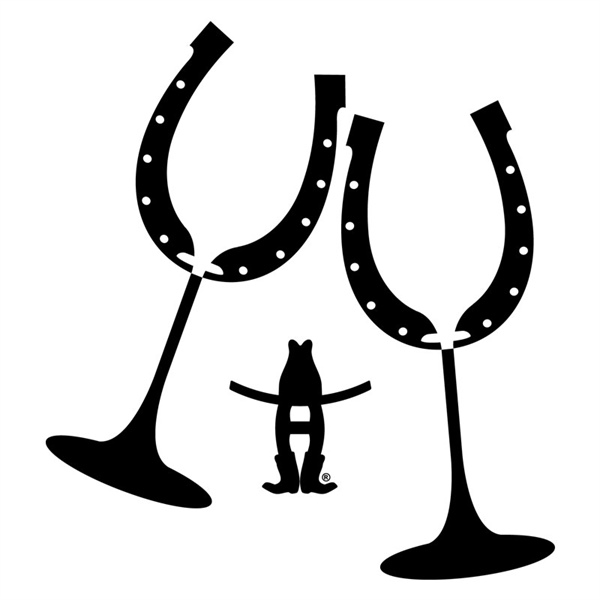Well, maybe not all day, but there is always a “right” time for this easy-sippin’ quaff, be it brunch, lunch, dinner or “just because.” Sales of Rosé have exploded on the U.S. market, especially during the summer. And it’s no wonder: Rosés are light, refreshing, food-friendly and relatively low in alcohol. Plus, you can buy a bottle for under $15. What’s not to love about that?
Rosé, often called “the pink stuff,” isn’t from a specific grape or region; it’s just a genre of wine, like red or white. What differentiates Rosé from other wines is the way it’s made. In the traditional or “maceration” method, the dark-skinned grapes are crushed and remain in contact with the juice for a short period of time, generally 2 to 20 hours, to extract flavor and color according to the winemaker’s preferences. The Saignée (“San-yay”) method is a byproduct of red winemaking. During fermentation, a portion of the juice is bled off and put into a new tank to make Rosé. The remaining juice stays on the skins, which also concentrates the red wine’s intensity. The majority of Rosés are produced using the maceration method. Wines made from the Saignée method are typically darker in color and have richer aromas and flavors.
Rosé can range in color from peach to nearly red, depending on the grape used and how long the grape skins were in contact with the juice. They may be sparkling, sweet, off dry or bone dry. Most Rosés are produced bone dry. Flavors include red fruits (strawberry, cherry, raspberry), flowers, citrus or melon. They are generally crisp on the palate, which is why they are so refreshing.
The world’s largest producer of Rosé is France, specifically Provence, where they have been producing softly hued pink wines for more than 2000 years. Here, wines are known for their light dry elegance and classic food pairings that complement the Mediterranean cuisine. Rosés are typically made from Grenache, Syrah, Mourvedre, Carignan and Cinsault grape. Provence’s neighbor, the Languedoc, also produces top quality Rosé at an affordable price. Styles are similar to those in Provence. Tavel, in the Southern Rhone, is an AOC dedicated specifically to Rosés, usually based on the Grenache grape. These wines tend to have more body and structure than most Rosés.
Spain is the world’s second largest Rosé producer. Spanish Rosés (called Rosado) are made throughout the country, with the northern areas of Navarra and Rioja being the most noted regions. Rosés are typically made with Garnacha (Grenache) and/or Tempranillo, the main grapes of the area, and may be blended with a local white grape, Viura. Spanish Rosé wines are dry, but bright and fruity, and pair well with local charcuteries and cheeses.
The U.S. follows Spain in production of Rosé. Historically, most pink wines produced in the U.S. were sweet blush wine (remember “White Zin?”) But that has changed, as consumer tastes are moving toward a much drier style of wine. Today, wine regions such as Napa Valley, with its long sunny summers and cool ocean breezes, are undergoing a Renaissance of Rosé, producing pink wines from Pinot Noir, Merlot, Cabernet Sauvignon, Zinfandel, Petite Sirah, Sangiovese, Charbono, Syrah, Grenache, Carignane and more. In Pino Noir-centric Oregon, about 65% of the state’s nearly 800 wineries make at least one Rosé, according to the Oregon Wind Board. In Washington, top producers like Cayuse Vineyards, Long Shadows, Chateau St. Michelle and Gramercy Cellars are producing top-quality Rosés. East Coast wineries have jumped on the bandwagon, too: Long Island’s Channing Daughters Winery makes six versions of Rosé.
Italy is the world’s fourth largest producer of Rosés. Generally, Italy has three main producing regions for Rosés (known locally as Rosato), with each having a very distinctive and easily recognizable style: The Veneto, near Lake Garda, is famous for its Chiaretto di Bardolino, a vibrant, pale wine that boasts floral, red berry, citrus and spice sensations; The Cerasuolo di Abruzzo, located between the southern Appennines Mountains and the Adriatic coast, produces a Rosato from the Montpulciano de Abruzzi grape, with distinct cherry color and flavor; and Puglia, one of Italy’s warmest regions (at the heel of the boot), produces rosatos from Bombino Nero, blends of Negroamaro and Malvasia Nera and Primitivo, a relative of the American Zinfandel.
Indeed, wherever you go in the wine world, you will find Rosés. Germany, Austria, the UK, South Africa, Chile, Australia and New Zealand, and even Tasmania, have all gotten into the act in response to the growing popularity of this quaffable wine style. So, no need to fear: if you’re an All Day Rosé kind of drinker, most likely you will find one at your fingertips, wherever you are, and whenever you’re thirsty.


